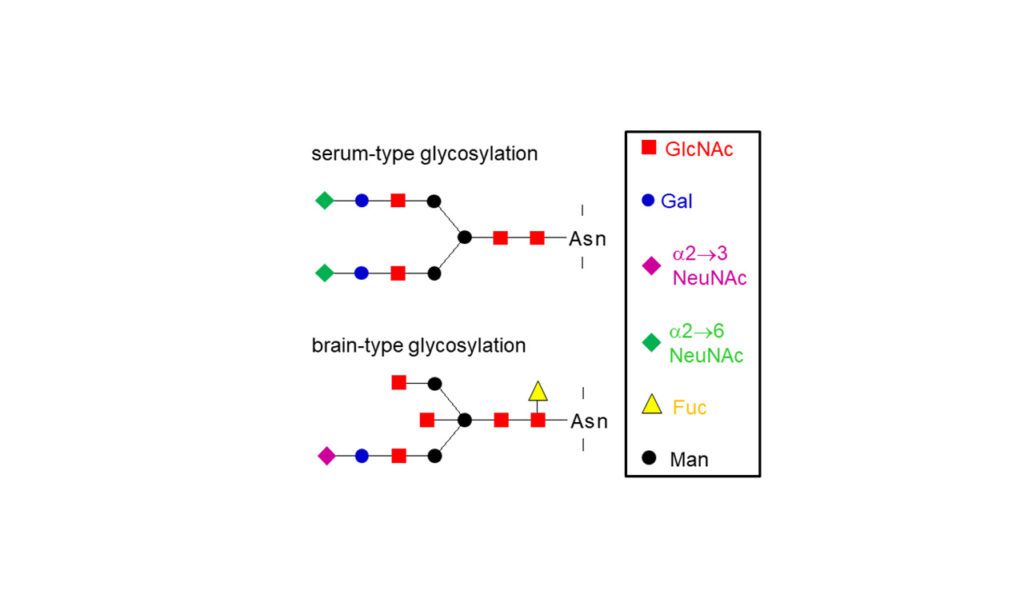
Maintenance of Brain Homeostasis by Sugar Structures
CSF – cerebrospinal fluid, in German also called ‘liquor cerebrospinalis’ or ‘Nervenwasser’ – with a particular protein called ‘beta-trace protein’, was the topic of my doctoral thesis ‘Isolation and chemical characterization of -trace protein from human cerebrospinal fluid: identification as prostaglandin D synthase’ (1992) in the CSF laboratory of the Neurological Clinic, MHH. CSF and the contained proteins contribute to the maintenance of brain homeostasis, i.e. to the well-being of our brain that is located within very delicate surroundings to perform its functions. In my work, I established a purification method for beta-trace.
This was not trivial due to the different protein species that are present within this sugar-containing (glycosylated) protein (i.e. a glycoprotein) and the low concentration of beta-trace in CSF. During a guest research stay at GBF I determined the complete amino acid sequence of this intrathecally (locally within the brain) synthesized protein and characterized its post-translational modifications, see figure. My work was supported by a doctoral scholarship from the state of Lower Saxony granted for two years.
After finishing my doctoral thesis, my first regular job at the GBF enabled me to extend my studies to other CSF proteins. We succeeded in characterizing the sugar structures (glycosylation) of beta-trace protein and other intrathecally synthesised proteins as “brain-type”. On the contrary, the “serum-type” glycosylation of serum proteins which are transported across the blood-brain barriers is not altered. The sugar structures therefore seem to have a particular relevance for homeostasis in the different body fluids.
